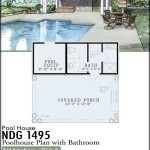Essential Aspects of Free Plans for Building a Tiny House on Wheels
Building a tiny house on wheels provides a unique opportunity for sustainable and affordable living. Access to free plans can further enhance the affordability aspect. Before embarking on this journey, it's crucial to consider the fundamental factors that will guide your project.
1. Design and Layout
The design should accommodate your living requirements while considering space constraints. Optimize every square foot with multi-functional spaces, ample storage, and efficient room configurations. Sketch out your desired layout, considering the placement of windows, doors, and furniture.
2. Materials and Construction
Free plans often specify materials and construction methods. Assess the durability, affordability, and availability of different materials for framing, siding, roofing, and insulation. Determine the necessary tools and skills required for the construction process.
3. Foundation and Framing
The foundation is the backbone of your tiny house. Consider the weight distribution and stability of various foundation options, such as trailers, skids, and platforms. The framing provides the structural support for the house. Choose framing materials that balance strength and weight efficiency.
4. Utilities: Electrical and Plumbing
Electrical and plumbing systems are crucial for comfortable living. Free plans provide guidance on wiring, outlets, and fixtures. Consider energy-efficient appliances and lighting to minimize utility costs. Plumbing systems should include water storage, drainage, and waste disposal solutions.
5. Insulation and Climate Control
Insulation is essential for maintaining a comfortable temperature year-round. Explore different insulation materials and techniques that fit your climate and budget. Consider ventilation and climate control systems to ensure a healthy indoor environment.
6. Appliances and Fixtures
Appliances and fixtures enhance the functionality of your tiny house. Free plans typically include suggestions for compact and efficient appliances, such as refrigerators, stoves, and storage solutions. Choose fixtures that maximize space utilization and optimize storage.
7. Legal and Safety Considerations
Building codes and regulations vary depending on your location. Ensure your tiny house complies with local building standards and obtain necessary permits. Safety features, such as smoke detectors, fire extinguishers, and secure doors and windows, should be incorporated into the design.
8. Cost and Budget
While free plans provide a cost-effective starting point, consider additional expenses such as materials, tools, labor, and permits. Create a detailed budget and track expenses to avoid overspending. Explore cost-saving measures like using recycled materials and negotiating with vendors.
9. Timeframe and Timeline
Building a tiny house can be a time-consuming process. Establish a realistic timeline and break the project into manageable phases. Plan for potential delays due to weather, material availability, or unforeseen circumstances.
10. Research and Support
Thoroughly research the tiny house movement and connect with experienced builders. Join online forums and communities to seek advice, share ideas, and troubleshoot challenges. Accessing free plans is just the first step; ongoing research and support will guide you throughout the building process.

Free Tumbleweed Diy Tiny House Plans Houses
:max_bytes(150000):strip_icc()/ana-tiny-house-58f8eb933df78ca1597b7980.jpg?strip=all)
4 Free Diy Plans For Building A Tiny House

27 Adorable Free Tiny House Floor Plans Craft Mart

Tiny House Floor Plans 32 Home On Wheels Design

27 Adorable Free Tiny House Floor Plans Craft Mart

27 Adorable Free Tiny House Floor Plans Craft Mart

The Tiny Project Modern House Plans

Tiny House Plans Wild Free

The Small House Project Tiny Blog

Picture Of Tiny House Plans For Families Floor Company On Wheels








